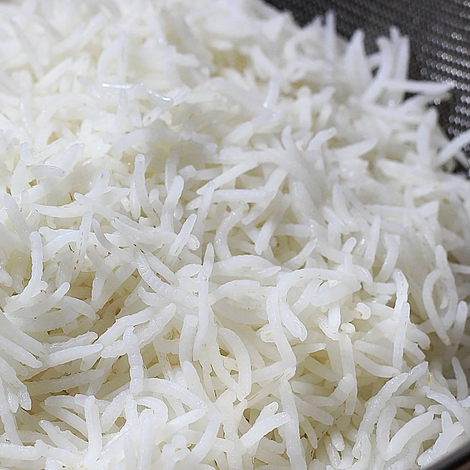Products
Photos & Videos
Photos

Indian Basmati and Non-Basmati Rice
Indian Basmati rice is a premium long-grain rice known for its distinct aroma, slender grains, and delicate taste, primarily grown in the Indian subcontinent. Here's an overview of the key characteristics and specifications of Indian Basmati rice:
### Key Characteristics of Indian Basmati Rice:
1. **Aroma**: One of the most defining features, Basmati rice has a unique, fragrant aroma due to the presence of a compound called 2-acetyl-1-pyrroline, setting it apart from other rice varieties.
2. **Grain Length**: The grains of Basmati are notably long and slender, with lengths increasing up to twice their size upon cooking. Aged Basmati tends to have even longer grains.
3. **Texture and Taste**: After cooking, Basmati grains remain separate, fluffy, and slightly chewy, offering a mild, nutty flavor.
4. **Origin**: Traditional Basmati rice is grown in specific regions of India, mainly in the northern states of Punjab, Haryana, and Uttar Pradesh, and is often awarded Geographical Indication (GI) tags.
5. **Varieties**: Indian Basmati is available in various types, such as Pusa Basmati, 1121 Basmati, and Traditional Basmati, each offering subtle variations in grain length, aroma, and flavor.
6. **Health Benefits**: Basmati rice has a lower glycemic index compared to other rice varieties, making it suitable for those managing blood sugar levels.
### Specification Details:
- **Moisture**: 12% maximum
- **Broken Grains**: Typically, high-grade Basmati has less than 1% broken grains.
- **Foreign Matter**: 0.1% maximum
- **Purity**: 95% or higher (specific to non-mixed varieties)
Due to its superior quality and unique characteristics, Indian Basmati rice is highly valued in international markets and is a staple in cuisines worldwide, especially in dishes like biryanis and pilafs.
### Key Characteristics of Indian Basmati Rice:
1. **Aroma**: One of the most defining features, Basmati rice has a unique, fragrant aroma due to the presence of a compound called 2-acetyl-1-pyrroline, setting it apart from other rice varieties.
2. **Grain Length**: The grains of Basmati are notably long and slender, with lengths increasing up to twice their size upon cooking. Aged Basmati tends to have even longer grains.
3. **Texture and Taste**: After cooking, Basmati grains remain separate, fluffy, and slightly chewy, offering a mild, nutty flavor.
4. **Origin**: Traditional Basmati rice is grown in specific regions of India, mainly in the northern states of Punjab, Haryana, and Uttar Pradesh, and is often awarded Geographical Indication (GI) tags.
5. **Varieties**: Indian Basmati is available in various types, such as Pusa Basmati, 1121 Basmati, and Traditional Basmati, each offering subtle variations in grain length, aroma, and flavor.
6. **Health Benefits**: Basmati rice has a lower glycemic index compared to other rice varieties, making it suitable for those managing blood sugar levels.
### Specification Details:
- **Moisture**: 12% maximum
- **Broken Grains**: Typically, high-grade Basmati has less than 1% broken grains.
- **Foreign Matter**: 0.1% maximum
- **Purity**: 95% or higher (specific to non-mixed varieties)
Due to its superior quality and unique characteristics, Indian Basmati rice is highly valued in international markets and is a staple in cuisines worldwide, especially in dishes like biryanis and pilafs.
Our People

Juan Sagastume · Supplier
Endorsements
Endorse Green Shine Industries Corp to acknowledge cooperation and trustworthiness and to share positive experiences.
Endorsements: 0
Recommended suppliers for you
By clicking “Accept Cookies,” I agree to provide cookies for statistical and personalized preference purposes. To learn more about our cookies, please read our Privacy Policy.
/200x200/company-logo/12/14/31/121431aec3c698946fe1a125eb15277302285354/Green_Shine_Industries.png)
